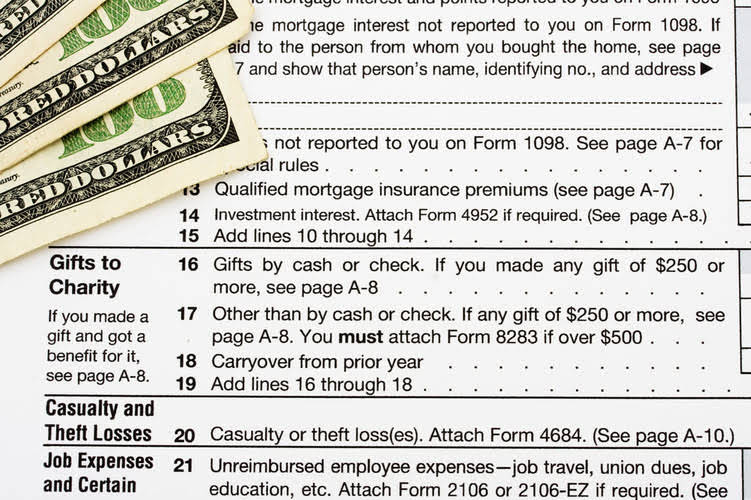How do you record a payment for insurance?

Whether you’re using QuickBooks Online or QuickBooks Desktop, this tool streamlines the process of managing prepaid expenses. Post a comment below if you have additional questions about recording your monthly insurance premiums in QBDT. When creating a budget sheet, it’s crucial to include prepaid and accrued expenses. To ensure accuracy, incorporate them into your budget sheet preparation tips to get a clearer picture of your overall financial standing. The journal entry is debiting unexpired insurance $ 12,000 and credit cash $ 12,000.
Record prepaid insurance with journal entry

By tagging each prepaid expense, you can easily track how much each department or project is spending. This detailed categorization provides better insights into your spending and simplifies reporting. For a comprehensive guide on setting up and using classes and tags, download our guide on recording prepaid expenses in QuickBooks. This resource also covers how to record prepaid insurance the fundamental steps of prepaid expense management, from initial setup to ongoing monitoring.
Amortization
This rule helps taxpayers claim deductions sooner, but requires careful consideration of payment timing and benefits duration. The Cost Principle requires that prepaid expenses be recorded at their original cost, not at an expected future value. This ensures that the initial value of the expense is accurately reflected. Prepaid expenses are recognized as a current asset because they provide future economic benefits to the company. In some cases, prepaid expenses can be calculated using an amortization schedule.

How to Record Prepaid Expenses in QuickBooks Online
Think of it like buying an annual gym membership—you pay the entire fee upfront, but the benefit (access to the gym) extends throughout the year. Because this benefit stretches into the future, accounting rules classify prepaid expenses as assets—things of value your company owns. Common examples include insurance premiums, rent, software subscriptions (like QuickBooks), and website hosting fees. Initially, these prepayments are recorded as assets on your balance sheet. contribution margin As you consume the service or good, the prepaid amount gradually transitions from an asset to an expense, a process known as amortization or expensing. The journal entry for prepaid expenses is debited to the prepaid expense account under current assets and credited to cash payments or accounts payable accounts when payment is made.
How to Record Accrued Salaries? (Definition, Journal Entries, and Example)

Prepaid expenses can cover any product or service that provides a continual benefit over time, but many relate to purchases a business must make in advance. Accident insurance premiums, for example, must be purchased before something goes wrong. Create a prepaid expenses journal entry in your books at the time of purchase, before using the good or service. After understanding the key definitions and different types of prepaid expenses, now it is time to know how to account for the prepaid expenses as well as how to record the amortization. Amortization refers to the recognition or spreading of expense over a period of time when such expense incurred. For intangible assets, the recognition of expense is called amortization, not depreciation.

- In cases where coverage is front-loaded with more significant protection early in the term, businesses may need a weighted allocation approach.
- To recognize the expense of the policy evenly over the policy term, divide the total policy amount of $1,800 by 12 for a monthly insurance premium expense of $150.
- Instead, prepaid expenses are first recorded on the balance sheet as an asset.
- One thing you want to make sure is that your prepaid expense asset account has a balance of $0.00 at the end of the accrual period.
- These expenses, if managed correctly, can significantly enhance financial statements and support effective cash flow management.
- The company sells the policy to the customer and may offer other types of coverage.
Recording the prepaid expenses impacts both the balance sheet and the income statement. Using the concept of the journal entry for prepaid expenses below is the journal entry for this transaction in the books of Company-B at the end of December. In the business, the company usually needs to make an advance payment for the insurance that it has purchases. In this case, it is important for the company to record the payment as prepaid insurance. The insurance expense account is debited to show an increase in monthly expenses. You pay a lump sum upfront to secure legal services, which are then expensed as those services are provided.
Best Practices for Managing Prepaid Expenses in QuickBooks

How frequently you prepare adjusting entries depends on the number of periods over which Cash Flow Management for Small Businesses you intend to distribute or amortize the cost of the benefit. Depending on the size of the business and the complexity of its financial statements, you may need to go beyond condensed summaries to find specific information about a prepaid expense. As each month passes, adjust the accounts by the amount of rent you use. Since the prepayment is for six months, divide the total cost by six ($9,000 / 6).
- For example, if you pay $1,200 in advance for a one-year insurance policy, you would debit the prepaid insurance account and credit your cash account for $1,200.
- Each month, create a journal entry to recognize one-sixth of the total expense.
- There are various types of insurance cover available to small businesses and business owners so we’ll have a look at those and how best to treat them in the accounts.
- For instance, track all prepaid marketing expenses or all prepaid expenses related to a specific project.
- While not always a significant amount, bulk purchases of office supplies like printer paper or stationery can be considered prepaid expenses.
Managing Prepaid Expenses Effectively
This is because prepaid expenses are essentially a type of asset that represents the future benefit of a payment made in advance. The most-common examples of prepaid expenses in accounting are prepaid rent from leases, prepaid software subscriptions, and prepaid insurance premiums. Below you’ll find a detailed description of each one as well as detailed accounting examples for each. Accounting for prepaid expenditures and ensuring they are properly recognized on your financial statements is a critical piece of financial reporting. In this article, we will delve further into how to appropriately account for prepaid expenses and their impact on the financial statements as well as decision-making.
